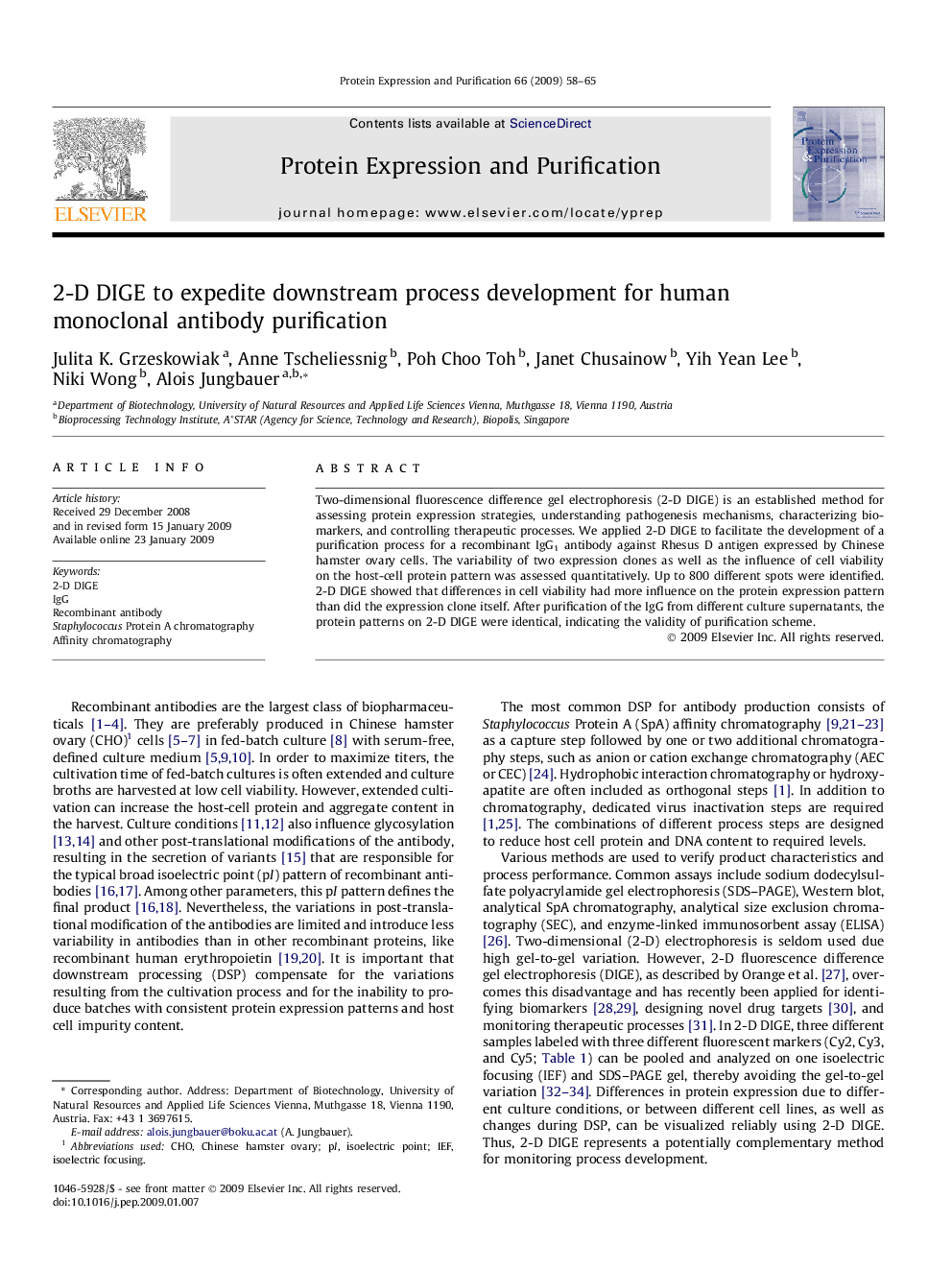| Article ID | Journal | Published Year | Pages | File Type |
|---|---|---|---|---|
| 2021418 | Protein Expression and Purification | 2009 | 8 Pages |
Abstract
Two-dimensional fluorescence difference gel electrophoresis (2-D DIGE) is an established method for assessing protein expression strategies, understanding pathogenesis mechanisms, characterizing biomarkers, and controlling therapeutic processes. We applied 2-D DIGE to facilitate the development of a purification process for a recombinant IgG1 antibody against Rhesus D antigen expressed by Chinese hamster ovary cells. The variability of two expression clones as well as the influence of cell viability on the host-cell protein pattern was assessed quantitatively. Up to 800 different spots were identified. 2-D DIGE showed that differences in cell viability had more influence on the protein expression pattern than did the expression clone itself. After purification of the IgG from different culture supernatants, the protein patterns on 2-D DIGE were identical, indicating the validity of purification scheme.
Related Topics
Life Sciences
Biochemistry, Genetics and Molecular Biology
Biochemistry
Authors
Julita K. Grzeskowiak, Anne Tscheliessnig, Poh Choo Toh, Janet Chusainow, Yih Yean Lee, Niki Wong, Alois Jungbauer,
